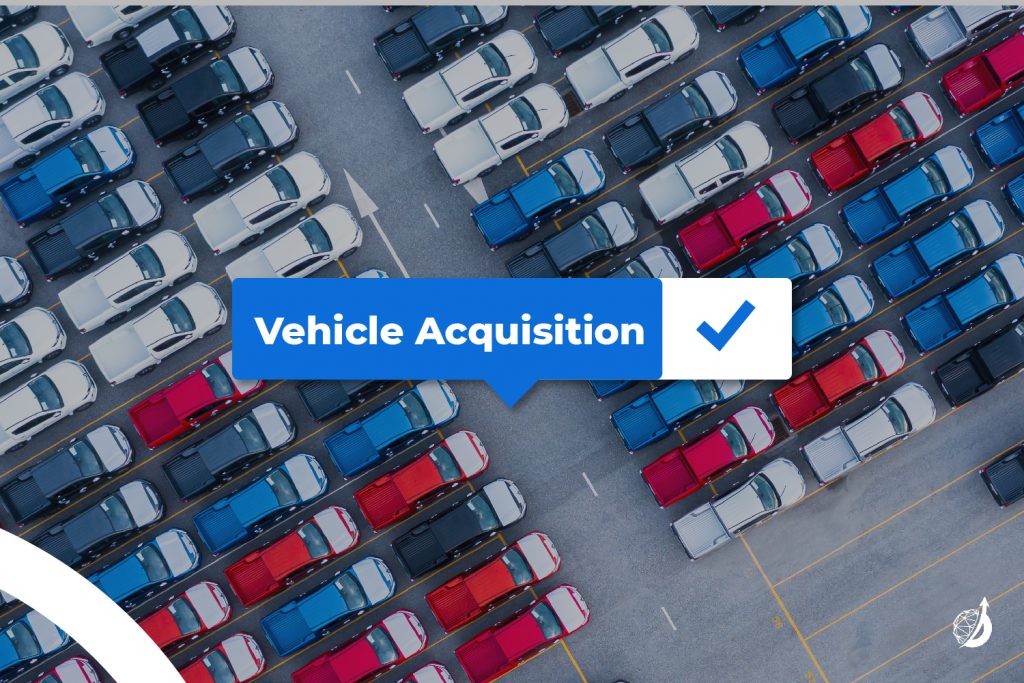6 Best Practices for Optimizing Your Fleet’s Vehicle Acquisition Strategy

When you’re busy managing all the moving parts in your fleet, vehicle acquisition might sound like the easy part. But the decisions you make during the acquisition phase can significantly impact your total cost of ownership (TOC) down the road. That’s just one reason why more fleet managers are embracing customized strategies that set the groundwork for success.
Whether you’re just launching your fleet, adding more vehicles or going through consolidation, the right acquisition plan can yield a significant payoff. Use these best practices to start customizing your fleet’s strategy today.
Key considerations for your customized fleet acquisition strategy
As you’re designing your strategy, use these six factors to help guide you to the best solution for today and where your fleet is heading.
1. Explore vehicle financing and leasing options
Your first question will likely be something along the lines of, “Which is better: financing or leasing?” In reality, it’s not typically that cut and dry. Every company is a little different, with varying requirements within their organization. By reviewing your financials and your acquisition options comprehensively, you can choose the best path forward based on real data, not a “hunch.” (And remember to explore “trac leases,” which give you some of the benefits of traditional financing, and other hybrid options.)
2. Navigate dealership and OEM inventory challenges
Current production disruptions have triggered a short supply of inventory, which is likely to last through the end of 2020. Given this market dynamic, fleet managers need to be more strategic about when they’re planning to acquire new vehicles. Utilize predictive analytics to understand your vehicle’s true lifecycle—and ensure that production disruptions don’t, in turn, disrupt your fleet’s operations.
3. Standardize, standardize, standardize
Vehicle standardization often gets overlooked in fleet management. But when done right, standardization can be a key driver of cost savings and efficiencies and remarketing optimization. Consider the model and features that best fit your business’ needs. Then, standardize your fleet. By doing so, you’ll save money and open the door to consistent, predictable strategies for maintenance, fueling and more.
4. Leverage timely acquisition and replacement
Vehicle lifecycles vary based on company, wear and tear, and a variety of other factors. But no matter your fleet size, it’s critical to look at the data and pinpoint when your opex costs outweigh the benefits of investing capital in a new vehicle. Timing matters more than you think, and data often paints a much different picture than what you’d assume. By replacing vehicles at the right intervals, you can maximize your resale value and lower your cost per mile.
5. Get proactive about inventory management
Creating annual budgets is important. But with the advent of all things data, the “set it and forget it” approach results in critical missed opportunities. Review the prior two years of vehicle history. But also be proactive about tracking your data month to month. Are vehicle habits and behaviors changing throughout the year? Do you need to replace a unit a little bit sooner than planned? By leveraging analytics and maintaining flexibility, you can ensure that your inventory management strategy puts you in the best possible position to maximize value.
6. Take a holistic view
No matter how you construct your fleet acquisition strategy, one thing is certain: it shouldn’t sit in a silo. Fuel management, maintenance programs, GPS, remarketing and other factors impact, and are impacted by, the way that you bring new vehicles into your fleet. By taking a “full picture” view, you can spot more inefficiencies and make optimizations that ensure your acquisition plan is setting the stage for success.
With the rise of big data and analytics, fleet management has taken on a whole new level of complexity. That’s one reason why more in-house teams are partnering with companies that handle one or many—or in some cases, even all—aspects of their fleet management. When seeking out a fleet management provider, look for a company that takes a truly customized approach to your acquisition strategy. Future-minded partners will offer a variety of acquisition approaches, including hybrid options, which enable you to reap maximum value regardless of production disruptions.
When you’re ready to optimize your acquisition strategy, reach out to the Onward team. We’ll conduct a thorough fleet assessment to help you immediately identify untapped opportunities to reduce your TCO. That includes both “tried and true” and innovative acquisition strategies, all tailor-made for your business’ needs.

[…] Your fleet management strategy should incorporate all the major stages of a vehicle’s lifecycle: acquisition, operation (maintenance, fueling, safety and compliance) and remarketing. By taking this end-to-end […]